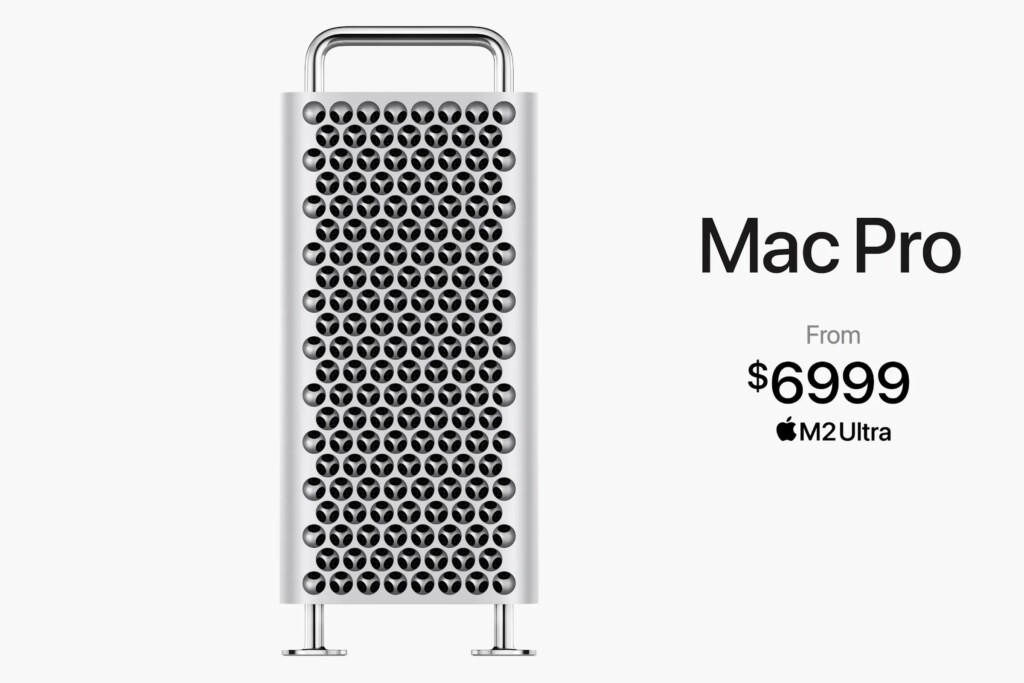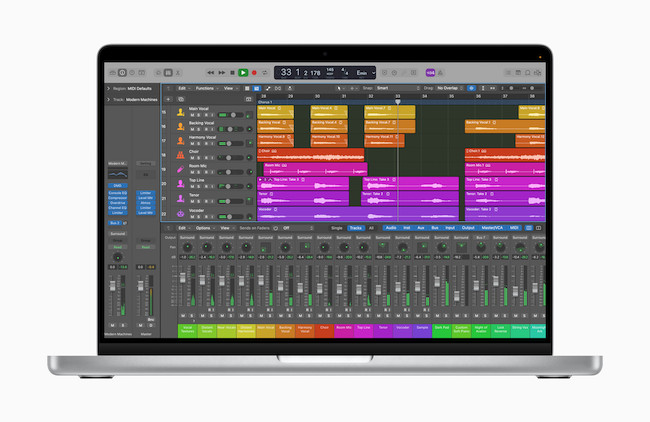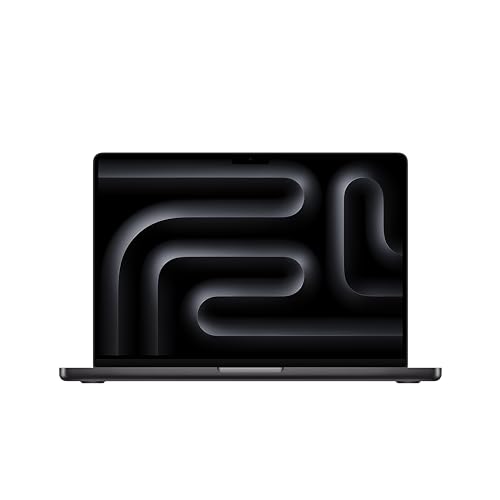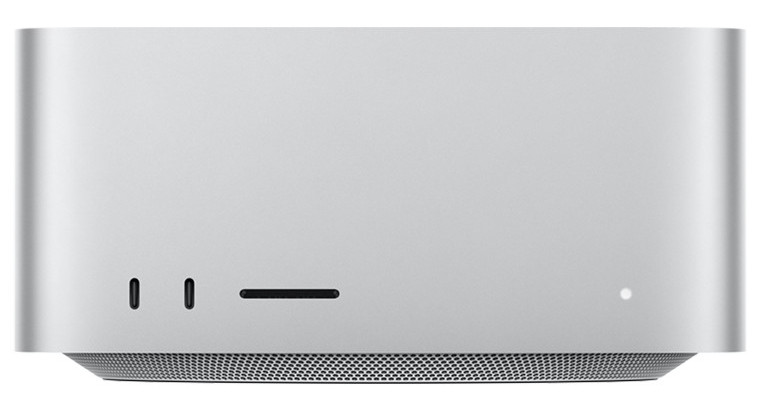Macs are the best computers for musicians and producers and here we’ve taken a closer look at the best Macs for creating music on in 2024.
Whether you want a mobile touring laptop or a studio machine, we’ve looked at the best Macs for audio production for all needs and budgets.
We might be biased but we think that Macs are by far the best computers for using music production software because they’re so reliable, stable and easy to use.
In fact some of them like Apple’s Logic Pro are made specifically for creating music on a Mac and costs just $199 (£199).
Almost all of the top DJs use Macs for performing too and most of the best DJ software now work on Macs too.
Macs remain the computer of choice for creatives and professional music producers due to their fast and reliable performance, ease of use, sleek design and portability.
The latest Apple Silicon M1, M2 and M3 processors have also replaced the slower Intel processors making them even more attractive for music producers.
We’ve tried them all and in our testing and reviews, we found that the best Mac for music production of 2024 is the M3 MacBook Pro due to its amazing combination of power, portability and incredible sound support.
However, its not in everyone’s price range so we looked at a range of Macs starting from just $599 (£649) all the way to up to the best models costing thousands.
Table of Contents
- Best Music Production Setup For Macs
- Apple Silicon vs Intel
- 1. M3 MacBook Pro 16 inch (Best Overall)
- 2. M2 Mac Studio (Best For Studios)
- 3. M2 Mac Mini (Best Budget Mac)
- 4. M2 MacBook Air (Best Portability)
- 5. M3 iMac 24 inch (Best Value)
- Best Macs For Musicians Price Comparison
- Is The MacBook Pro or Air Better?
- Is The Mac Pro Good For Music Production?
Best Music Production Setup For Macs
Apart from your choice of Mac, here are some other things to consider when creating the best music production setup.
Be aware that some music production software or Digital Audio Workstations (DAWs) don’t have an Apple Silicon compatible version yet.
This doesn’t mean that you can’t use them on Apple Silicon Macs though as macOS uses a clever system called Rosetta 2 to translate them to work on Apple Silicon Macs.
It does however mean that you may encounter problems from time to time and slower performance compared to using music production software that has been built to work specifically with M-series chips, especially when using plugins.
Currently, major music production packages including Ableton Live, Adobe Audition, Avid Pro Tools, Cubase, Apple’s Logic Pro X and GarageBand all support Apple Silicon chips natively so you’ll enjoy the full performance benefits with them.
- RAM
Music production requires a lot of RAM and so the more RAM your Mac has the better.
If you’re handling long, multi-track songs, you’ll definitely need a lot of RAM in your Mac.
The more RAM you have, the more instruments, effects, plugins and layers of sound your Mac can handle.
Not to mention, everything will run much faster and smoother.
At the very minimum you need 16GB of RAM although the maximum RAM in the Apple Silicon M2 Ultra chip goes up to a whopping 192GB of RAM which is way more than any music producer would ever need.
The problem nowadays with Macs is that you can’t upgrade the RAM after purchase so our advice is buy as much RAM as you can possibly afford for music production.
- Hard Drive Space
As well as needing lots of RAM, music production software also requires lots of hard drive space.
Nowadays, all new Macs have Solid State Drives (SSDs) which are the fastest because they have no moving parts like mechanical drives do.
Some new base model Macs only come with a measly 512GB of hard drive space but you can customize this in higher end Macs up to 8TB.
The good news is that unlike with RAM, you can also extend your Mac’s storage capacity with an external SSD drive or Thunderbolt drive.
Nowadays, with Thunderbolt connections, your Mac can transfer data almost as fast from an external SSD as it can from the internal drive.
SSD and Thunderbolt drives are much faster than mechanical HDD drives and music editing software requires high-speed read-write capabilities that usually only internal hard drives can offer.
- External Monitors
Apart from the Mac you choose, an important thing to consider is an external display for producing music on especially if you’re going to be working for long periods on a small MacBook screen.
If you require multiple displays or monitors, be aware that the base model M1, M2 and M3 Macs can only support a maximum of one external monitor.
Although there are still ways to connect multiple monitors to base model Apple Silicon Macs it requires third party hardware and we don’t recommend it.
This is not a problem with any Mac with an Pro or Max chip which can support two or more external monitors.
And it’s definitely not a limitation with the M2 Ultra chip which can also support up to 5 monitors (4 via Thunderbolt/USB-C and 1 via HDMI).
Apple Silicon vs Intel
Apple introduced the first Apple Silicon chips in 2020 and now all new Macs have an M1, M2 or M3 chip inside them.
Apple Silicon chips are made by Apple and are much faster than the Intel chips previously used in Macs.
This is good news for music producers not only in terms of speed but in terms of sound too.
Apple Silicon Macs support spatial audio for a more immersive music listening experience.
Although you can still buy second hand or refurbished Intel Macs, we strongly recommend choosing an Apple Silicon Mac over a second hand older Intel Mac.
Older Intel Macs have anything ranging from an Intel Core i5 to i9 all of which are still suitable for music production on macOS.
However, it’s only a matter of time before all music production software runs only on Apple Silicon and they will gradually drop support for older Intel chips because the M-series chips deliver much better performance.
With this in mind, here are the best Macs for producing music on in 2024.
1. M3 MacBook Pro 16 inch (Best Overall)
The M3 MacBook Pro was released in November 2023 and is easily the most powerful Mac for music production on the move of 2024.
The M3 MacBook Pro replaces the M2 MacBook Pro released in January 2023 and uses the same 3-nanometer process used in the latest iPhone 15 Pro with A17 Pro chips.
The new 3nn M3 Pro and M3 Max chips are even faster than the M2 versions delivering incredibly fast processing performance.
You can customize the MacBook Pro M3 Max with up to 128GB of RAM too which is incredible for a laptop of this size.
This gives music producers unparalleled speed and power at handling the specific needs of resource hogging audio workstations and music software plugins.
The M3 chip allows producers to handle complex musical arrangements with ease, MIDI compositions of any size, layered tracks, VSTs and huge instrument libraries without missing a beat.
There are three Thunderbolt 4 and USB 4 ports to connect audio interfaces, MIDI controllers and external hard drives so you’ll never run out of space.
On top of this is the mini-LED Liquid Retina XDR Display which makes working on tracks a pleasure.
The M3 MacBook Pro also supports HDMI 2.1 port with support for higher resolution external monitors including 4k displays up to 240Hz, 5K displays and 8K displays.
There’s also a built in 3.5mm headphone jack to help you fine tune tracks and the six speaker surround system supporting spatial audio is the best quality sound we’ve heard from any Mac.
With a maximum of 22 hours battery life you can use it pretty much a whole day without having to charge it.
Pricing for the 16 inch M3 MacBook Pro starts at $2,499 which isn’t cheap but for music producers that want the ultimate in mobility and power, it’s definitely worth it.
Note that there is also a cheaper 14 inch M3 MacBook Pro from Apple but we don’t recommend it for music production.
It only has 8GB of RAM, the screen is too small to work on for long periods and it only supports connecting one eternal monitor.
You can check out our full M3 MacBook Pro review for our thoughts on this amazing laptop.
Pros:
- Apple’s latest and most powerful MacBook Pro
- Easily handles complex musical arrangements and plugins
- Incredible liquid retina display
- 1600 nits of brightness
- Amazing battery life
- Up to 128GB of RAM
- Upgraded HDMI 2.1 ports
- Supports multiple displays
- Lots of ports for connecting external devices
Cons:
- Price
- Not upgradable after purchase
- No ultra chip option
2. M2 Mac Studio (Best For Studios)
The M2 Mac Studio is Apple’s latest Mac aimed at creative professionals and the best desktop Mac for producing music in a studio.
The original M1 Mac Studio was released in 2022 alongside a new monitor which is designed to go with it, the stunning Apple Studio Display.
In 2023, Apple released the upgraded M2 Mac Studio and introduced Apple’s fastest ever M2 Ultra chip.
The M2 Mac Studio is basically a mix between the M2 Mac Mini and M2 MacBook Pro with an incredibly powerful M2 Max or new M2 Ultra chip with up to 24-core CPU performance.
Apple calls the M2 Ultra chip “the worlds most powerful chip for a personal computer” and it’s certainly hard to beat with up to 24-core performance and a 32-core Neural Engine.
The Mac Studio with M2 Ultra chip also includes up to 192GB of unified memory, 800GB/s or memory bandwidth and an 8TB SSD which dwarfs the processing power of both the Mac Mini and MacBook Pro.
It’s also jam packed with ports for connectivity including four Thunderbolt 4 ports, a 10GB Ethernet port, two USB-A ports, HDMI 2.1 and a Pro audio jack.
If you’re recording music in a professional studio but don’t have the budget for a Mac Pro, the Mac Studio is an excellent alternative although like the Mac Mini, you will need to buy an external monitor, mouse and keyboard.
The Mac Studio is designed to go with the 27 inch 5K Apple Studio Display which costs $1599 (£1499). However, you can also use a cheaper alternative external monitor for the Mac Studio instead.
Pricing for the Mac Studio starts at $1,999 (£1,999) for the M2 Max with the M2 Ultra starting at $3,999 (£3,999).
If you bought a top of the range Mac Studio with M2 Ultra chip and maxed it out with 8TB of SSD and 192GB RAM it would cost an eye watering $7,999 (£6,100) so it’s Apple’s most expensive Mac outside of the Mac Pro.
However, you get an absolute powerhouse of a music producing machine that won’t need upgrading anytime soon.
You can check out our M2 Mac Studio review for a closer look at this amazing Mac.
Pros:
- The most powerful Mac on the market with M2 Ultra chip
- Up to 24-core CPU processing power
- Up to 8TB internal SSD
- Up to 192GB RAM
- HDMI 2.1 support
- Supports up to 5 external monitors
- Incredibly high quality images when paired with Apple Studio Display
Cons:
- Price
- Not upgradable after purchase
3. M2 Mac Mini (Best Budget Mac)
The Mac Mini is the smallest Mac you can get but the latest M2 Mac Mini is easily the best budget Mac for music production.
Released in January 2023, the M2 Mac Mini starts at just $599 which is actually $100 cheaper than the original M1 Mac Mini released in 2020.
Unlike MacBooks, the Mac Mini also has the advantage of an audio-in port for those that want to connect an instrument to it without a USB audio interface.
The other great advantage of the M2 Mac Mini is that you can easily upgrade the RAM on it. You can choose up to 32GB of Ram with the Mac Mini with storage of up to 2TB.
You will of course need to buy an external monitor for the Mac Mini as it doesn’t come with one.
Although it’s more expensive, we strongly recommend going for the more powerful M2 Mac Mini with M2 Pro chip as it also supports up to three external displays – two via Thunderbolt and one via HDMI.
The basic M2 Mac Mini supports two external displays but only one via Thunderbolt, the other via HDMI. The HDMI port is also useful if you want to connect your Mac Mini to a TV too.
Of course, you’ll also need to buy a keyboard and mouse although these are relatively cheap and you can use pretty much any USB or Bluetooth keyboard or mouse with the Mac Mini.
You can read our full M2 Mac Mini review for more on this incredibly powerful budget Mac.
Pros:
- Excellent value for money
- Suitable for beginners or amateur Musicians
- Great for Logic Pro X or GarageBand
- M2 Pro model supports up to three external displays
- Audio-in port
Cons:
- Not available with M2 Max or M2 Ultra chip
- Requires purchasing of keyboard, monitor and mouse too
4. M2 MacBook Air (Best Portability)
Although the MacBook Air is the least powerful MacBook on the market, it’s also a cheaper MacBook and offers the ultimate in lightweight portability.
Apple released the new M2 MacBook Air in 2023 and for the first time, gave it a 15 inch screen making it the biggest MacBook Air and yet still light as a feather.
One advantage of the MacBook Air is that it has no fan so if you’re recording in a studio and need total silence, then it may be a better option for you than the M2 MacBook Pro (although the fans on the Pro are incredibly quiet and barely ever kick-in anyway).
The smaller 13-inch MacBook Air isn’t ideal for music production as the screen is so small but it is the cheapest starting at less than $1,000.
However, a maxed-out 15 inch M2 MacBook Air starts at $2,499 and you might want to consider the M3 MacBook Pro instead once you start approaching this price point.
The 15-inch screen provides a decent amount of screen estate although you may want to consider getting an external monitor for when you’re in a studio or using it at home although one drawback is the M2 MacBook Air only supports one external display.
However, there are ways to connect multiple displays to base level Apple Silicon Macs that by default, only support one external monitor.
Pros:
- Incredibly light and portable
- New 15 inch screen in the M2 model
- No fans makes it totally silent
- Cheapest MacBook on the market
Cons:
- Lacks processing power and spec of the MacBook Pro
- Not upgradable after purchase
- Only supports one external display
5. M3 iMac 24 inch (Best Value)
If you’re going to be based permanently in a recording studio or at home and don’t have the budget for a Mac Studio, then look no further than the 24 inch M3 iMac.
Launched in November 2023, the M3 iMac replaces the 2021 iMac (there was no M2 iMac) and is the fastest iMac ever made.
Apple claim the updated 24 inch M3 iMac is twice as fast as the previous M1 model.
It also has a better 4.5K Retina Display with support for 1 billion colors (the same color support as the Apple Studio Display) to help with precision waveform analysis and audio editing.
The M3 iMac continues the stylish look that its become famous for and is available in six colors: silver, yellow, orange, pink, purple and blue.
If you don’t want the expense of having to buy an external display for a Mac Mini or Mac Studio, the iMac is the best value Mac for music production with everything housed within an impressive 24 inch 4.5K display.
It also comes with a Magic Keyboard, Magic Mouse and Touch ID so you have everything you need to get started out of the box unlike with the Mac Mini or Mac Studio.
The iMac comes with silent SSD drives and you can customize this up to 2TB of storage although you’ll still probably need to get an external SSD hard drive for professional music production.
You can also customize it with up to 24GB of Unified Memory (RAM) which should be enough for most music producers.
The M3 iMac also comes with 3 USB ports and 2 Thunderbolt ports so there’s plenty of room for connecting audio interfaces, mixers, MIDI controllers and external displays.
The M3 iMac also includes a 3.5mm headphone jack which is an essential port for any music producer.
Note that there is no 21 inch or 27 inch M3 iMac. 21 inch iMacs are discontinued and 27 inch iMacs are also no longer available as Apple has effectively replaced them with the Mac Studio and Apple Studio Display.
Pricing: Starts at $1,299 for the 8-core CPU base model or $1,499 for the 10-core.
Pros:
- Excellent value all-in-one computer for music production
- Includes everything you need to get started out of the box
- Generous 24 inch 4.5K display
- Fast processing power with M3 chip
- Includes mic input
- Comes in lots of different colors
- Up to 2TB hard drive
- Up to 24GB RAM
Cons:
- Not portable
- Lack of ports
- 27 and 21 inch model discontinued
- No ultra chip option
Best Macs For Musicians Price Comparison
If after these reviews you’re still not sure which Mac to go for, here’s a side-by-side comparison of the best Macs in terms of pricing.
This comparison excludes the Mac Studio which isn’t available from Amazon but pricing starts at $1,999.
Is The MacBook Pro or Air Better?
The MacBook Pro is better than the MacBook Air for music production because it’s more powerful than the MacBook Air.
The slight advantages the MacBook Air has over the Pro when it comes to music production is that it has no fans so it’s completely silent if you’re in a studio environment.
Being lighter of course, the MacBook Air is also more portable.
Is The Mac Pro Good For Music Production?
The Mac Pro is the most powerful Mac on the market so you’d expect it to make the list.
However, the reason the Mac Pro didn’t make our list is simply because starting at $6,999, it’s out of the price range of most mere mortals.

Until summer of 2023, the Mac Pro was the only Mac still using Intel chips but Apple has now finally added the Apple Silicon chip to it making it up to three times faster.
Like the Mac Studio, the Mac Pro is available with Apple’s fastest M2 Ultra chip but one advantage over the Mac Studio is that also allows users to expand it with six additional PCIe Gen 4 cards.
The design however is exactly the same as the old Intel version and is available in both desktop and rackmount chassis models.
Other features in the M2 Mac Pro include:
- Eight Thunderbolt 4 ports
- Two HDMI ports
- Three USB-A ports
- Dual 10Gb Ethernet ports
- WiFi 6E
- Bluetooth 5.3
- 3.5mm headphone jack
The new M2 Mac Pro can also support up to six of Apple’s incredibly powerful Pro Display XDR screens although at around $4,999 for the XDR, there are much cheaper external displays available.
For the money, we think the new M2 Mac Studio is actually better value for music production especially with the M2 Ultra chip.











